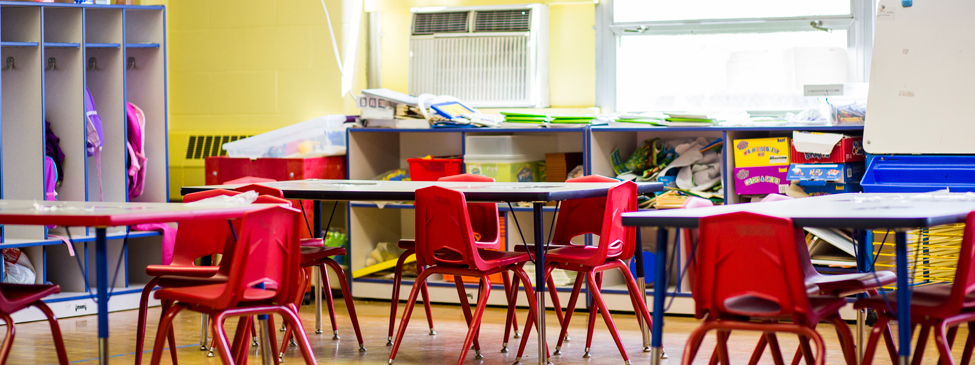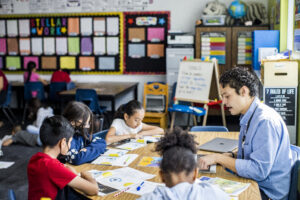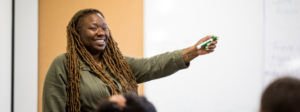My first thought when Terrance (not his real name) walked into my Spanish I classroom? Football player. Built like a linebacker, he towered over most tenth graders in the Brownsville, Brooklyn high school where I began my teaching career. Yet, as the weeks and months went on, I discovered Terrance didn’t spend his time after school on the football field. He spent it in our classrooms. Whether talking with his friends, doing homework in an empty room, or just letting the staff get to know him, it became pretty hard not to like Terrance. His gregarious personality was a welcome reprieve from my struggles as a first year teacher.
Every now and then, though, there were days Terrance was different. In class, he was uncharacteristically reserved, and there was a growing sadness behind his eyes. As a teaching rookie, I had no idea how to approach what I was seeing. So I didn’t. Until Terrance came to me.
“Hey Profe,” he said, peeking his head in my door after school one spring afternoon.
“¿Qué pasa? What’s going on, Terrance?”
He said nothing at first, instead collapsing into a chair, finally raising his head so I could see a face full of fear, confusion, and anxiety—like the floor beneath him had just disappeared. Then, with a deep breath, he came out to me.
[subscribe]
He worried about his family’s reaction and about what would happen at school, but more than anything, he was feeling lost and looking for guidance. I wanted to tell him I knew what that falling feeling was like and that, yes, he would land and there would be a community that loved him once he got there. But like Terrance, I was afraid to talk about it.
So I said nothing.
In the decade since, I’ve learned my experience as a gay educator was not unique. In fact, research shows my straight colleagues were more likely to create a safe space for Terrance since I was too afraid to be open. While straight teachers unknowingly present their sexuality regularly—pictures of their spouses on desks, casual references to opposite sex partners—internal and external homophobia taught me to consistently navigate between being open and being safe.
What if my administrator had been homophobic? What if Terrance’s family disapproved of my supporting him through his coming out process? Could I have been fired? I’m ashamed to admit it, but in the face of those questions, I chose to be silent.
The reality is, though, kids like Terrance need the adults in their lives—including their teachers—to speak up for them. The Gay-Straight Alliance Network and the University of Arizona found LGBTQ students of color face bullying and harassment at disproportionate rates, not just from peers but from school staff, too. Lesbian, gay, and bisexual students are four times more likely to attempt suicide as straight classmates, and nearly half of transgender youth have considered suicide.
[related]
And outside of school, LGBTQ students often hear a message that’s as clear as it is disturbing: they should accept and expect injustice. What else could they possibly take away from the bills popping up in state legislatures across the country—most notably HB2 in North Carolina—that would deny basic civil rights protections to people based on their sexuality?
This is not a political issue. This is about our moral obligation as a society to ensure that schools are safe spaces for all kids to learn. Across the education sector, it’s time to consider how to better support educators—all educators—to address the unique and urgent needs of LGBTQ kids.
That means preparing teachers for how to respond to bias-based bullying, and how to support students like Terrance, who seek guidance as they navigate their own identities. We also need to support teachers and especially school leaders to foster school environments where both kids and adults can bring their authentic experiences to the table. As long as LGBTQ teachers feel unsafe living their truth at school, we are denying our students the role models they desperately need.
While I regularly get updates from many of my former students, I lost touch with Terrance. I’m not surprised. Maybe I’m embarrassed by my lack of action. Maybe he distanced himself from me after that day in my classroom. Whatever the case, I can no longer be silent.
Terrance, I wish I had known what to say to you. I wish I had done a better job as your teacher. So, wherever you are, Terrance, I’m sorry. You deserved—and continue to deserve—better.








